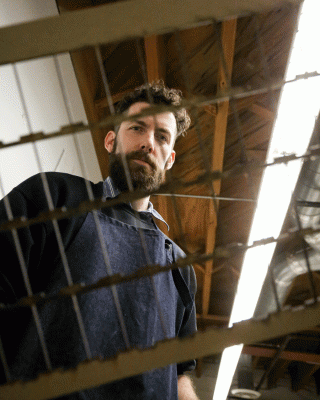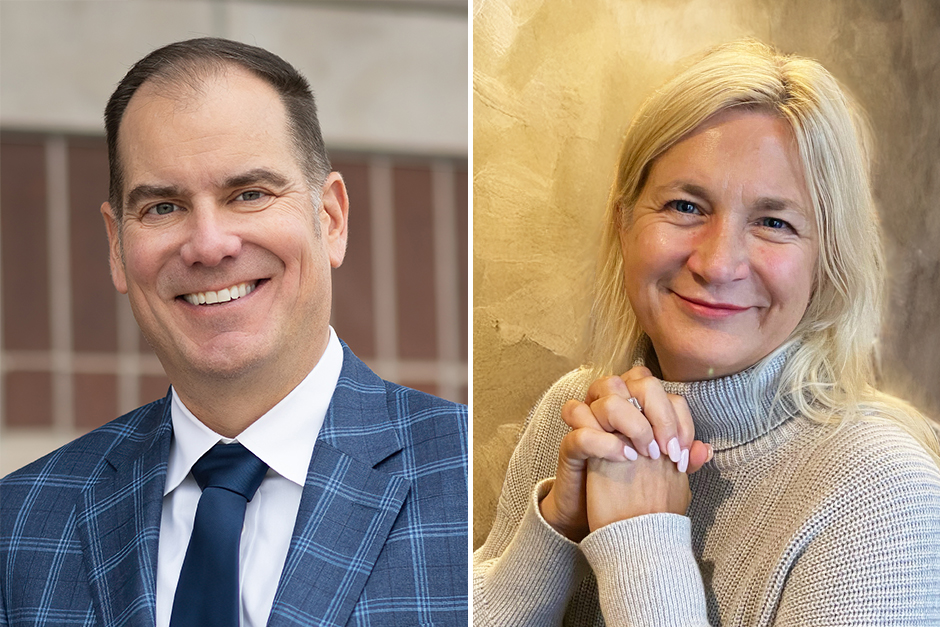Presence and play
Professor McKenzie enjoys researching and studying sound design and sound design installation, digital and internet culture, and memetics. He holds an M.F.A. in time-based art.
Time: the loop and pendulum

I arrived at Cornell upon the retirement of Professor Emeritus Tony Plaut ’78. Despite the variety in our creative interests, the prevalence of clocks in his final retrospective caught my attention, as I frequently integrate the clock as a motif in my own work. My graduate studies centered around time-based art, work intended to be experienced over time: performance, video, and sound. While I have worked across all the aforementioned disciplines, I often look at time itself as a subject and material. I am captivated by the tension between repetition and change. This often manifests in the form of loops or a pendulum’s swing—two structures that cycle through space only to return to their starting point.
Space: it’s better to be there
As an artist I am always thinking about things three-dimensionally (especially prints and drawings)—how does this exist as an installation?—how do these pieces respond to other artworks in the same room? As we continue to flood the internet with a steady stream of flat digital content, I increasingly find art has its power in physical presence and experience in space.
Artworks that have always evoked a visceral response in me are those that engage with architecture (Ann Hamilton’s “Event of a Thread,” Janet Cardiff’s “Audio Walks,” Yayoi Kusama’s “Infinity Mirror Rooms,” or Zimoun’s sound sculpture installations).
Sound: seeing and hearing
Culturally we divide music and art as unique creative endeavors. However, many composers and musicians push their work toward the visual and likewise visual artists manipulate sound as a material.
For me this comes back to space. Space is the obvious unifier between the auditory and the visual. Both are frequencies that bounce from surface to surface until they enter into and are translated by our eyes, ears, and minds.
Digital culture: Command+C
Though I do not consider myself a digital artist I do find immense inspiration and curiosity in digital culture and technologies. My recent collaboration with Dana Potter—“Retrack,” is indicative of this interest—curating imagery from online archives and social media feeds to produce digital collages and augmented reality (AR)-triggered sound compositions.
I want my students to understand “digital art” as a continuation and expansion of physically-based art mediums and engage in project-based learning that integrates digital and physical media.
Play: It is lighter than you think
Lastly, I feel I must include my commitment to play. I write this not as a declaration of expertise but as a reminder to myself. As an artist I use play to explore new ideas and as an educator I use play to help students push their own boundaries.
The tendency to look at the world through a macro lens has, in recent years, been one of existential crisis evident in and perpetuated by continued political division, climate change, and the pandemic, for example.
Play is open to failure.
Don’t be afraid to find wonder in the smallest of creative acts, don’t be afraid to play.
This story is part of a series on six faculty who offer expertise on the fields they are passionate about teaching.



